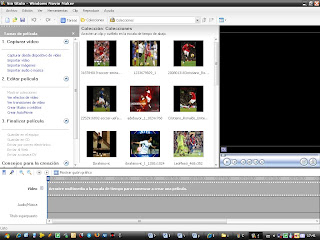Research Project
ADOBE PHOTOSHOP©
· ADOBE PHOTOSHOP
It is a graphics editing program developed and published by Adobe Systems. It is the current and primary market leader for commercial bitmap and image manipulation, and it is the flagship product of Adobe Systems.
With this program we can manipulated images, mix photos, change their characteristics, change their format, etc…
TO PRACTICE!
TECHNIQUE OF THE SELECTION
Some tools are easy but others are difficult. The tools that are easy to use are the "magic wand" or the "lasso" but the results aren’t precise. The one that has precision but it is difficult to work with, is the tool "pen".We use this technique for different effects.
PRATICE
A way to isolate an element of an image and to maintain the details of its edges is to use the filter “To extract”. The most important tools are: the highlighter and the paint bucket.
1. An image is chosen, we open it and we work with the version Marinates Photoshop CS3. Next, we go to Menu>Filter>“To Extract”. We open the window of the tool and we see the different possibilities of configuration of the tool brush on the right.
2. Now we define the thickness the brush with which we will draw up the outline. Next we go to the image and we drew up the part that we want to select. When we have already drawn the line of the wished image, we take the paint bucket and click on the selection.
3. We click the Preview button (right superior part of the screen). Now we observe the silhouette image surrounded by grey pictures (transparency), to see better the detail of the outline chooses in the menu of configuration of Preview (right part inferior) that the bottom is white or black.
4. Of this form you visualized the existence of I haul target or black. In this case it leaves I haul black, that makes difficult to integrate the image on a bottom of clear tones. In order to eliminate it and to correct it accounts with the tool To alter edges and “To clean” (left part superior) that purify the selection.
5. When you have cleared the halos presses OK, you will have the selected image isolated del bottom, single would be to integrate it al bottom that you wish. For this it unfolds the “To Edit”>Copy menu, - or the short cut of keyboard ctrl+c, opens the image that you are going to use of bottom and presses ctrl.+v - short cut of “To Edit>Paste.
In summary...
1. Open the image in Photoshop CS3>Filter> To extract
2. Brush> To define thickness...pixels> To isolate object
3. Preview>Menu preview configuration.
4. Depure the selection>Retouch and clean.
5. OK>Menu edit>Copy>Open the image of the bottom>Menu edit>Paste.


 of the city walls but today only the gate still stands (as does Florianska Gate in Krakow). Dluga Street (Ulica Dluga), which formed part of the Royal Way, is arguably the most picturesque street in Gdansk. Dating back to 1331 Dluga Street was the home of Gdansk's elite town officials, bankers, ship magnates etc. The street still has an air of "money" about it as the beautifully decorated buildings can testify.
of the city walls but today only the gate still stands (as does Florianska Gate in Krakow). Dluga Street (Ulica Dluga), which formed part of the Royal Way, is arguably the most picturesque street in Gdansk. Dating back to 1331 Dluga Street was the home of Gdansk's elite town officials, bankers, ship magnates etc. The street still has an air of "money" about it as the beautifully decorated buildings can testify.  it dates from the 14th Century. Once home to the famous astronomer Hevelius the building is now open to the public and is worth a visit if only to see the beautifully restored rooms (the Red Room is particularly stunning). Neptune's Fountain is nearby and this beautiful fountain is considered to be the symbol of Gdansk. It is located in front of Artus' Court (an impressive 16th Century mansion). During WWII the fountain was hidden from the Nazis and only returned to it's rightful place in 1954. Executions also used to take place in this square centuries ago.
it dates from the 14th Century. Once home to the famous astronomer Hevelius the building is now open to the public and is worth a visit if only to see the beautifully restored rooms (the Red Room is particularly stunning). Neptune's Fountain is nearby and this beautiful fountain is considered to be the symbol of Gdansk. It is located in front of Artus' Court (an impressive 16th Century mansion). During WWII the fountain was hidden from the Nazis and only returned to it's rightful place in 1954. Executions also used to take place in this square centuries ago. arguably the most atmospheric street in Gdansk. The architecture is reminiscent of Amsterdam with ornate steps and guttering adorning each house. Some of the best amber in town can be found on this street. At the end of the street is St Mary's Church which is believed to be the largest brick church in the world-it can hold upto 25,000 people ! If you're feeling fit enough you can climb one of the towers to enjoy stunning views of the city and surrounding areas.
arguably the most atmospheric street in Gdansk. The architecture is reminiscent of Amsterdam with ornate steps and guttering adorning each house. Some of the best amber in town can be found on this street. At the end of the street is St Mary's Church which is believed to be the largest brick church in the world-it can hold upto 25,000 people ! If you're feeling fit enough you can climb one of the towers to enjoy stunning views of the city and surrounding areas.

















